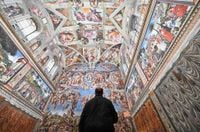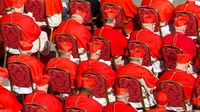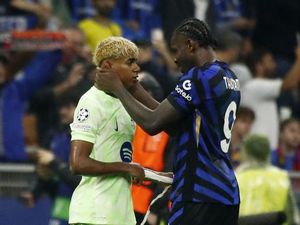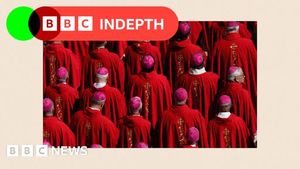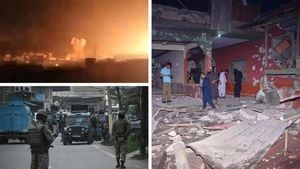The Vatican is gearing up for a historic conclave set to begin on May 7, 2025, to elect the 267th Pope following the death of Pope Francis. This conclave is notable for several reasons, including the unprecedented number of cardinals participating and the diverse international representation among them.
According to an announcement made by the Vatican on May 5, military jammers will be deployed to ensure that the Sistine Chapel, which will serve as the conclave's venue, remains completely isolated from outside communication. This measure is part of a broader security plan that includes establishing checkpoints around St. Peter's Basilica to manage the influx of faithful expected to gather for the event.
In total, 133 cardinals are anticipated to participate in this conclave, marking the largest gathering of cardinals for a papal election in history. This conclave will also feature the highest number of cardinals from different countries, with 71 nations represented, surpassing the previous records of 48 in 2013 and 52 in 2005. This shift reflects Pope Francis's efforts to make the Catholic Church more universal and less Euro-centric, a vision he championed during his papacy.
Church historian Jörg Ernesti highlighted the complexities of this election, stating, "It is generally more difficult to predict the outcome of the election today since the College of Cardinals is nationally and culturally more heterogeneous." This diversity among the cardinals adds layers of unpredictability to the selection process.
As the world awaits the conclave, speculation about potential candidates is rampant. Various media outlets and betting platforms are buzzing with names, though some, like the French newspaper La Croix, have opted not to discuss specific candidates, emphasizing that all cardinals are eligible for the papacy. The debate around favorites is fueled by Vatican reporters, known as "Vaticanisti," who closely follow the developments.
Despite the uncertainty surrounding the candidates, Ernesti believes that the overall mood among the cardinals favors the continuation of the reforms initiated by Pope Francis. He stated, "There are too many good candidates eligible for the office," suggesting that the election is not merely a matter of selecting a successor but also about maintaining the direction set by Francis.
In a lighter moment, the "Rome Duck Store" has taken note of the conclave by offering a rubber duck model dressed as a pope, which has become a novelty item among shoppers of all faiths.
As the conclave approaches, the significance of the pre-conclave discussions has grown, particularly given the increasing plurality among the papal electors. The conclave itself remains a highly ritualized event, distinct from political processes. Prominent cardinals, such as Luxembourg's Archbishop Jean-Claude Hollerich and Philippine-born Luis Antonio Tagle, have made statements following Francis's death, but both have since retreated from public discourse.
Interestingly, some older cardinals who had been sidelined during Francis's tenure are re-emerging. Cardinal Juan Luis Cipriani of Peru, who faced punishment in 2019 over sexual abuse allegations, was spotted at the pre-conclave meeting. Similarly, US Cardinal Roger Mahony, who has a history of cover-up accusations, was seen at the Pope's coffin. Their presence raises questions about the potential influence of the older generation of cardinals in the upcoming election.
Cardinals Christoph Schönborn of Vienna and Walter Kasper of Germany are among those advocating for the continuation of Francis's course, indicating a collective desire to uphold the reforms that have been initiated. Kasper warned that this conclave could take longer than previous ones, with historical context suggesting that the duration of conclaves can vary significantly. The last conclave, which elected Pope Francis, lasted only about two days, while the longest conclave in history stretched over two years.
Currently, betting platforms like Polymarket are suggesting that the papal election is likely to occur on May 9, 2025, but the cardinals themselves are not likely to engage in such speculation. The conclave, formally established in its current form by Pope Gregory X in 1274, will be conducted under the watchful gaze of Michelangelo's Last Judgment, a fitting backdrop for such a significant event in the Catholic Church's history.
The term "conclave" itself derives from the Latin words cum (with) and clavis (key), highlighting the seclusion of the cardinals during the election process. Historically, conclaves have evolved significantly, with major reforms implemented over the centuries to ensure a fair and focused election process. The requirement of a two-thirds majority, first introduced by Pope Alexander III in 1179, remains a cornerstone of the conclave's procedures.
In summary, the upcoming conclave represents a pivotal moment for the Catholic Church, with a diverse group of cardinals poised to make a significant decision about its future leadership. As the world watches and waits, the anticipation surrounding this event underscores the ongoing evolution of the Church and its governance.
